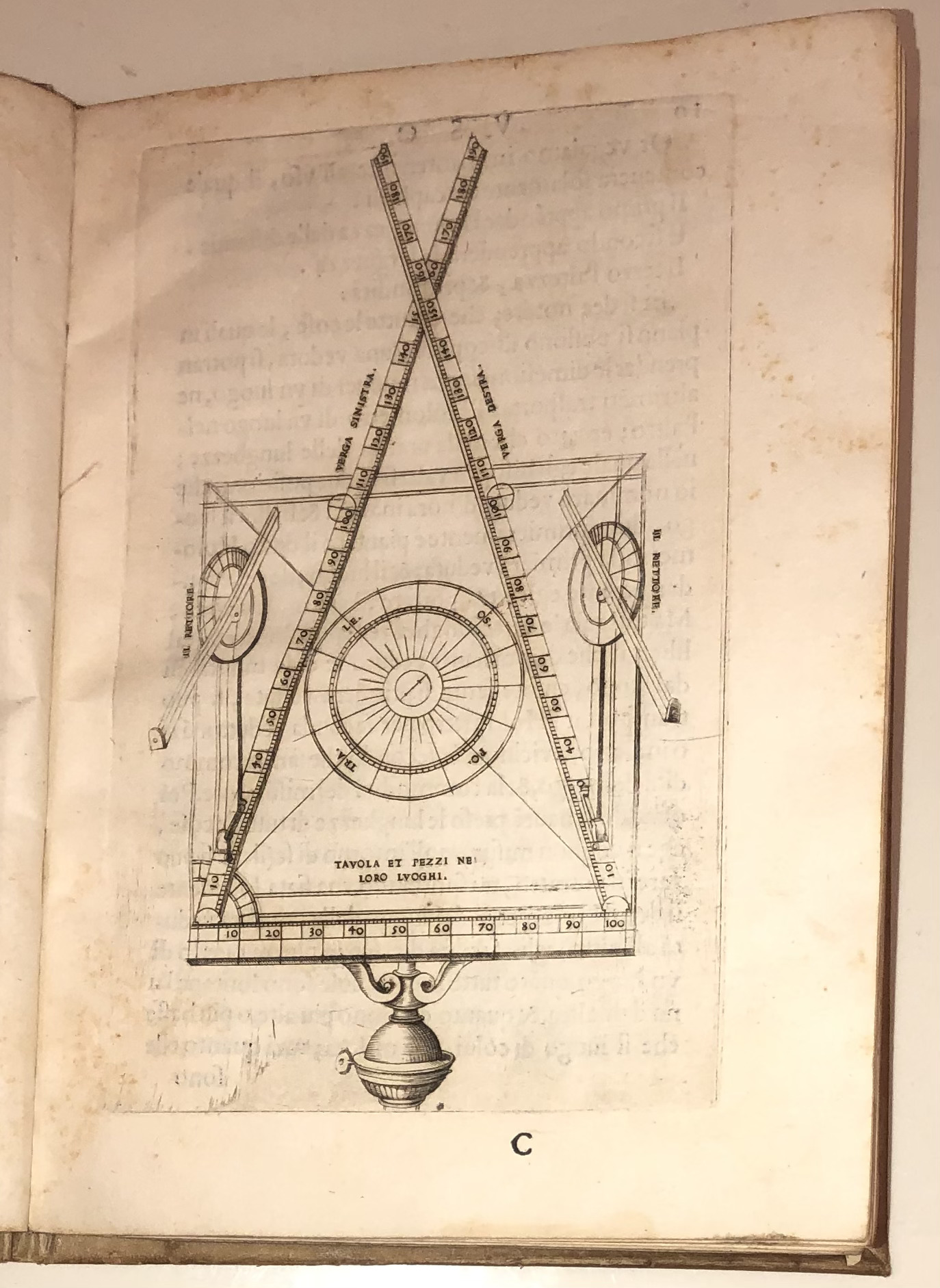Description
FULLONE [FOULLON}, Abel. Descrittione et Uso Dell’Holometro. Per saper misurare tutte le cose, che si possono veder coll’occhio cosi in lunghezza, & larghezza; come in altezza, & profondita. Venice: Giordano Ziletti, 1564.
First Italian edition of this work on the holometer and its use, first published in French in 1555. Abel Fullon (1513-1563/1565) was Director of the Mint for Henry II of France and also succeeded Leonardo da Vinci as engineer to the king of France. His holometer was an instrument that could be used to make angular measurements in surveying. In 1551, Henry granted Foullon a ten year patent monopoly on the holometer in exchange for Foullon’s publishing a description of the instrument. This was the first patent specification. The illustration of the instrument (main image) shows the overall composition of the holometer. It consisted of a square board, graduated at one edge, with a central compass and graduated circle. The arms, also marked with degrees, are hinged at the ends of the graduated side of the base and fold in on themselves. The hinges for this can be seen about halfway along the length of the arms. Each arm also bore a device called a rector, which stood out of the arm and carried sights for viewing distant points and measuring heights. However, owing to the difficulties of capturing perspective accurately, it is not immediately clear from this figure that the rectors were mounted on the vertical arms.
The illustrations in the original French edition were probably designed by Jean Cousin. They were engraved on wood, while those in this Italian edition were engraved on copper, which allows for greater finess. The landscape views in the Italian edition are somewhat different from those in the French edition.
Adams F-802; EDIT16 19600 (mentions a 1563 ed.); Mortimer 197; STC Italian p. 275; Wellcome I:2476.
Small 4to, pp. [12], 60, Illustrated with 16 engravings including 3 repeats (8 in text and 8 full-page of which 6 are set in landscapes); numerous fine historiated and putti initials and headpieces (unidentified ink stamp on title which is a bit soiled, text generally clean and fresh). Later vellum with black leather lettering-piece on spine (covers a bit soiled).













